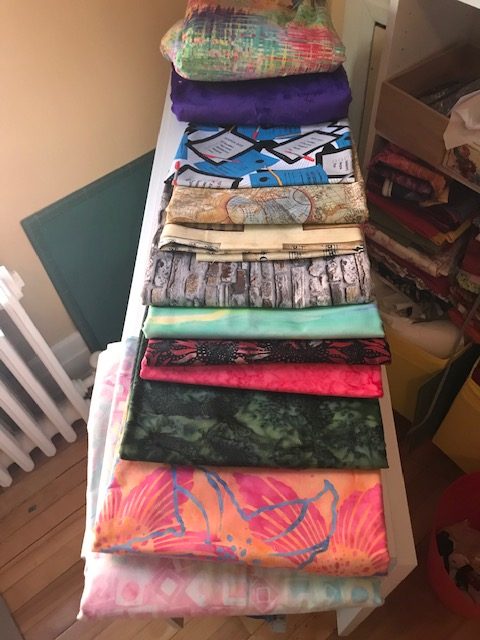To prewash your fabric or not to prewash your fabric – that is the question. There are some questions in the quilting world that spark the biggest debates – something like should the toilet paper go over or under the rule, or is it ok to wear shoes in your house? One of the biggest ones in quilting is if you should prewash your fabric. So, should you?

Shrinkage
I used to always prewash my fabrics and thought it was the only way. I’d dutifully wash, dry, and iron all those big pieces of fabric and put them on the shelf for future use. Now I if I prewash depends the project.
My main reason for prewashing was to ward off any possible fabric shrinkage. Some people don’t prewash because they want the gathered, puckered look you get if you wash your quilt after it’s done. But in my opinion, this approach only works properly if all your fabric is from the same line. Different types of cotton shrink at different rates, so if you’re using a hodge podge of fabrics, as I often do, your quilt may not shrink evenly.
Color bleeding
I also used to prewash because of colour bleeding, especially red. I didn’t prewash one I made for my sister and it ran, ruining it. I was kicking myself after because I knew it had the potential to run, yet I went ahead anyway. Another issue I have is the chemicals on the fabric. And I have no idea where it’s been and what it’s touched. It feels harsh to the touch, but some quilters like that because it makes it easier to quilt.
The problem really lies with precuts, the jelly rolls, etc. Those are not impossible to prewash, but difficult. When I have a lot of red in those, I put them in a lingerie bag to wash them, but it’s not ideal. You can soak them in water to help remove excess dye.
I know there are color catchers and special chemicals that you can use to set colors, but I’m a lazy quilter, so I prefer to do things as simply as possible.
One major exception with prewashing
I never prewash if I’m making a one-block-wonder quilt. With this technique, you layer identical pieces of fabric or panels and cut strips. These strips are then cut into triangles to form hexagons. It’s vital that the fabric be identical in the piles to get six matching pieces with the cut. When you prewash, the fabric can get pulled in different directions. This makes it impossible to line them up so each piece is the same.
It all comes down to what you prefer. I still prefer to prewash but I haven’t for a long time.
